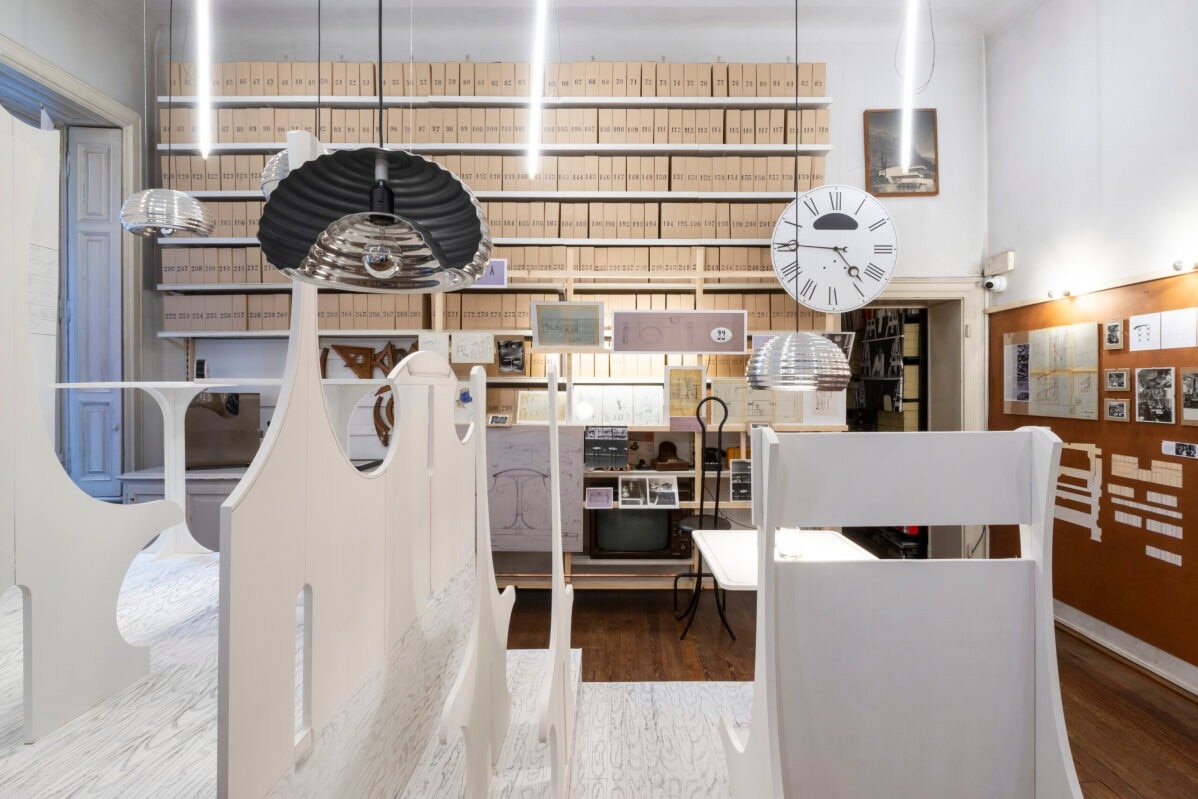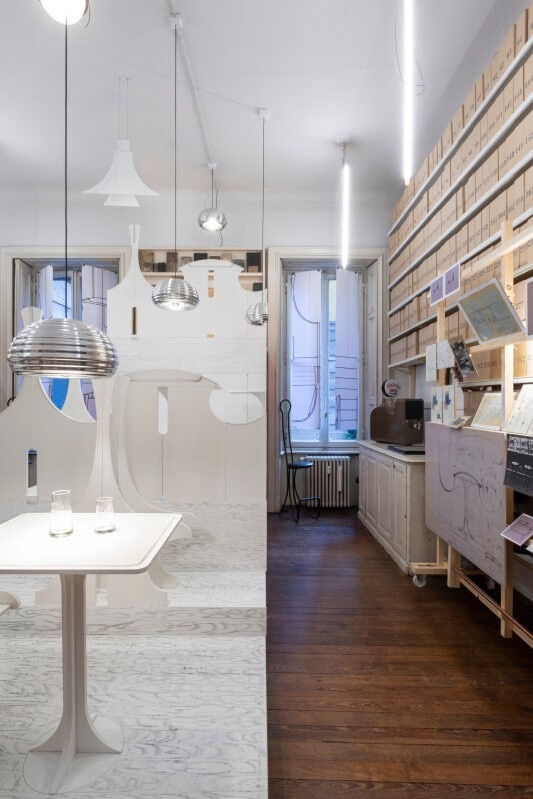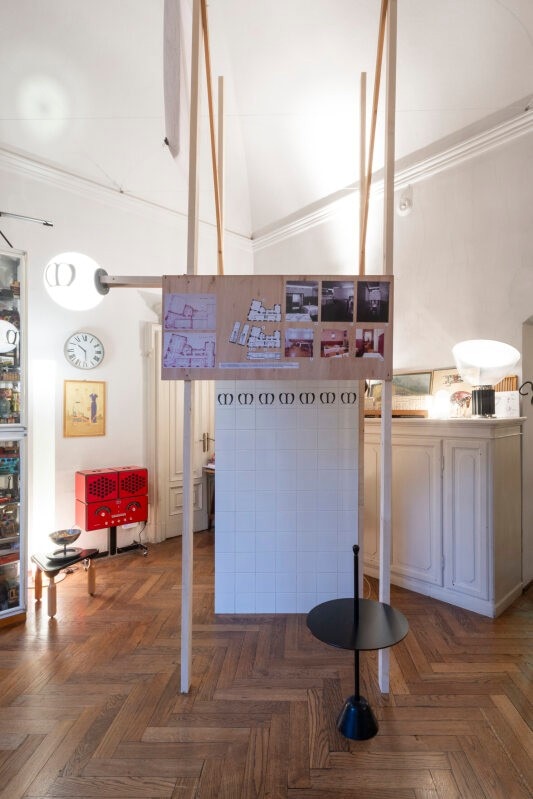One of Achille Castiglioni’s design mantras was that “environments must always be observed through the rituals of behaviors that occur in these spaces”. And what spaces offer a better opportunity to observe the enactment and design of the “ritual of eating” than restaurants?
The restaurant is a relatively modern invention, and as we know, one does not simply go there out of hunger alone (in fact, it is rare to find oneself as an individual in a collective space). Rather, it’s a place to share a special moment with someone, over the daily, essential act of eating, which is vital to our sustenance and well-being. The word “restaurant” itself comes from the “present participle of ‘ristorare’, meaning ‘to restore, rebuild, and renovate’,” explains Marco Marzini, designer of the layout and curator, along with Chiara Alessi, of the exhibition “Projects to Serve: Castiglioni and Catering”. The exhibition, which will be inaugurated at the Fondazione Achille Castiglioni during Design Week 2024 as part of Fuorisalone, will remain open year-round, almost like a restaurant.
These places introduced a fresh and informal way of socializing, where people engaged in friendly conversation with mouths half-full, plates, and cups before them.
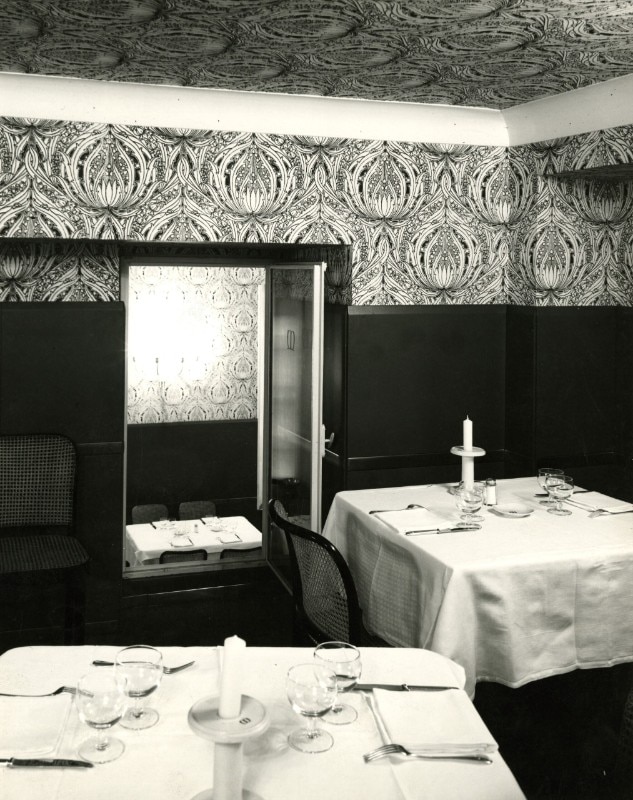
The exhibition presents seven catering projects, created between the late 1950s and the early 1990s. Sadly, many of these venues no longer exist, as such places often have a short lifespan, lasting only for a fair, a season, or perhaps a generation. Among the most significant series of projects presented are those developed for Splügen Bräu, a brand of the Poretti Brewery in Varese, Italy, ranging from a kiosk (1959) to a refreshment bar (1992), both commissioned for the Milan Fair. Throughout his career, Achille, initially with his brother Pier Giacomo, was drawn to innovative dining venues, including self-service places (referred to as “American-style” in the 1960s in Italy) and cafeterias or beer bars. These places introduced a fresh and informal way of socializing, where people engaged in friendly conversation with mouths half-full, plates, and cups before them.
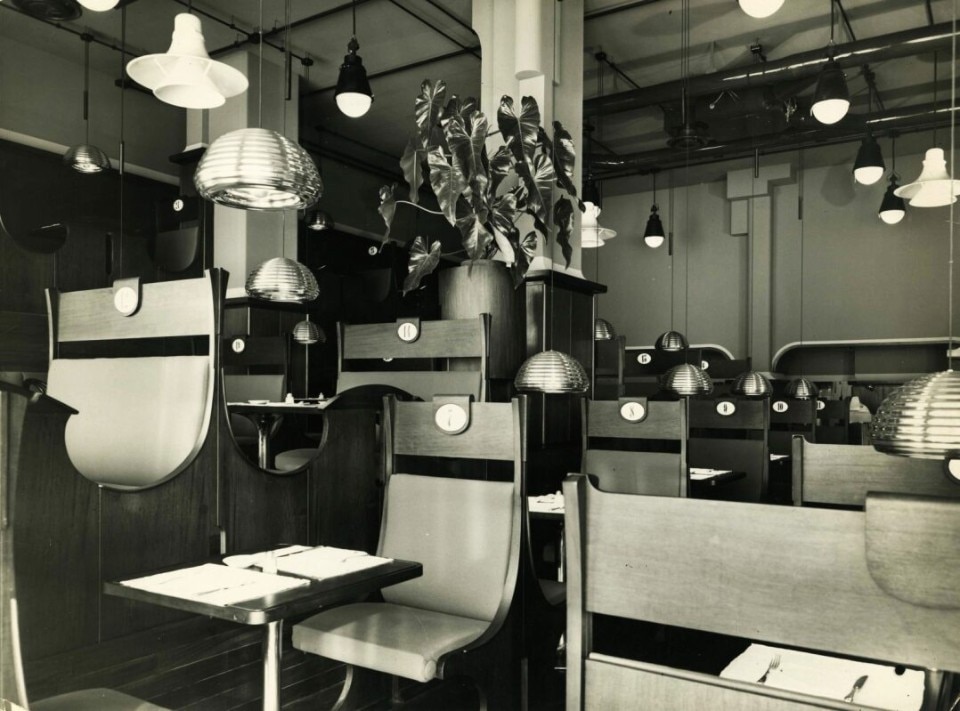
The centerpiece of this series, to which the exhibition pays direct homage, is the project for the Birreria on Corso Europa in Milan (1960), located on the ground floor of a new building designed by Castiglioni’s friend, Gigi Caccia Dominioni. The main space, immediately accessible upon entry, was a towering room that, left open, allowed for the development of an unprecedented and audacious concept: a stepped “staircase” were fixed “booths”, with tables and benches, created an interior landscape at four different heights, with peaks (marked by high backs) and troughs (formed by service paths). While the lower part of the space buzzed with activity, the expansive ceiling presented a “complex spectacle” of all the necessary equipment, which was deliberately left exposed, reinforcing the industrial ambiance of a busy public space. Artificial lighting consisted of two primary types: low, focused lighting to illuminate individual tables, and a high ambient glow derived from external street lights installed indoors.
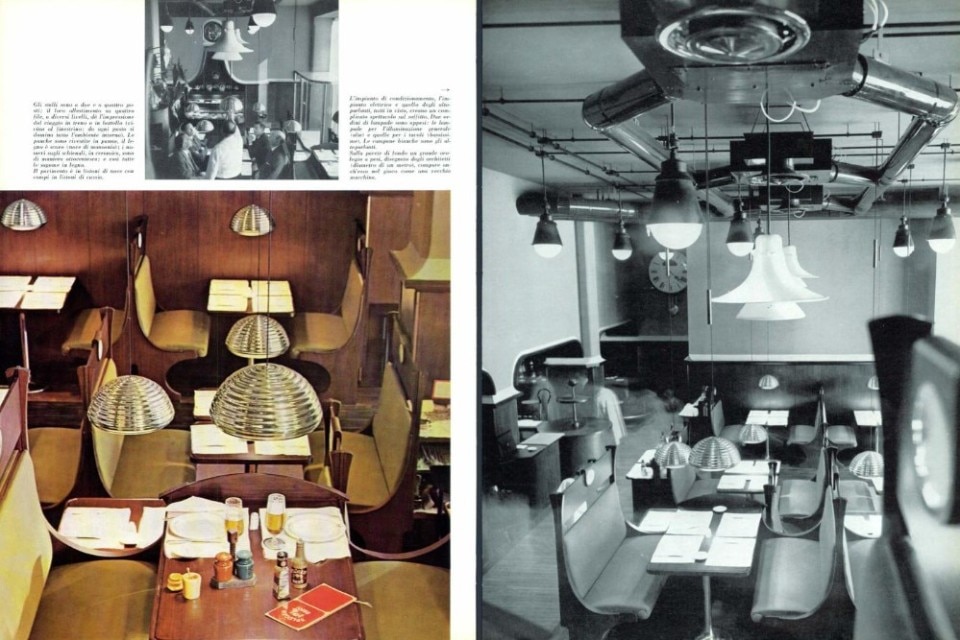
Among the many things designed and made for the occasion, and then put into serial production, in the best tradition of Italian design, which has always been very experimental and prototypical, are the “Splugen” lamp, continuously produced by Flos; elements of the “I Servi” series, initially by Flos and later by Zanotta; the “Spluga” stool by Zanotta; the glasses and bottle opener by Alessi; and lastly, the “Spinamatic” beer tap by Poretti, honored with the Compasso d’Oro award in 1964.
In addition to this unique space, Castiglioni also designed two more traditional yet unconventional restaurants in Milan in the 1970s, each brimming with innovative ideas and design concepts. The exhibition presents these projects with a wealth of newly unearthed archival material. Among the concepts, or what Achille fondly referred to as the “main design components,” are the vertical section work and the “compartmentalized” table typology, both of which find further exploration in these interior design projects.
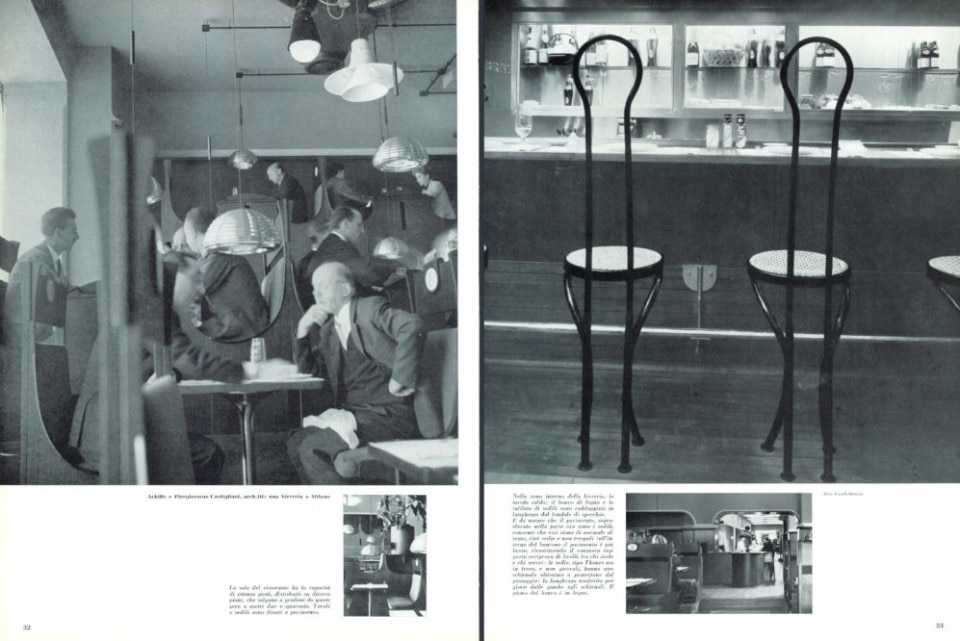
The Malatesta (1970) greeted visitors with a compact, low corner entrance covered entirely in glossy white ceramic, with only the name of the venue, designed by Michele Provinciali, standing out. Beyond this entrance are the main rooms, characterized by their modest height. Inside, a vibrant, sound-absorbing lower horizontal border decorated the walls, while an intricate stylized floral motif adorned the remaining surfaces, creating a captivating tapestry of lines and backgrounds. To compensate for the limited height of the entrance area and the extended corridor for quick service and kitchen access, an upper mezzanine was incorporated to provide more secluded spaces with direct views of the main hall through strategically placed openings.
The restaurant “da Lino” - Buriassi (1973) was located on the ground floor along an inner courtyard, with additional space on a lower floor. The layout consisted of linear rooms, with a central corridor reserved for service, equipped with purpose-designed trolleys and tables with innovative offset legs to increase seating comfort. The interiors featured red metal frames set against gray felt backgrounds, interspersed with mirrored surfaces on the tables, creating a kaleidoscopic effect that multiplied perspectives and intertwined diners’ gazes. These mirrors, later manufactured by Kartell, each housed a small luminous rosette that provided ambient lighting throughout. Notably, the ceiling of the downstairs dining room consisted of a large sloping plane of stretched canvas that concealed the ventilation system.
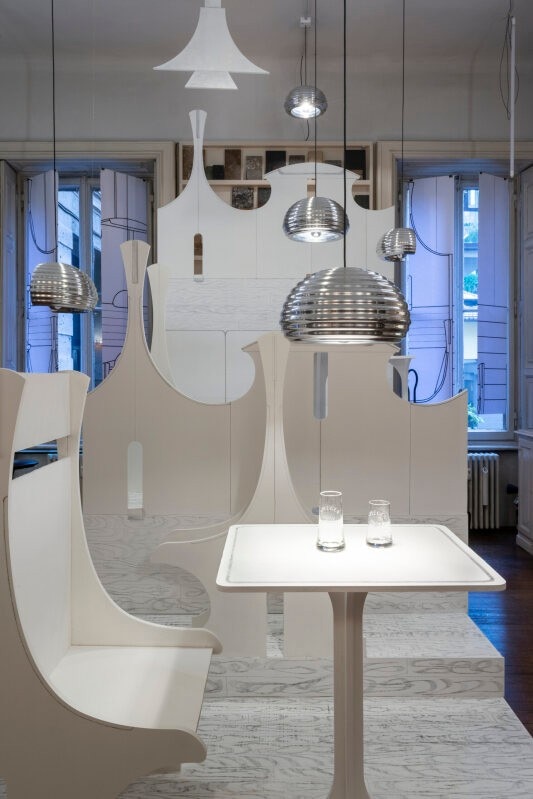
The exhibition unfolds in the rooms of the Achille Castiglioni Foundation and presents all these brilliant stories.
Wooden trellises, fitted with wheels for easy mobility, line the walls and serve as lightweight support structures for the extensive documentary material on display. In addition to an extensive selection of invaluable unpublished archival material documenting all the projects, the main room features a full-scale reconstruction of the Splügen Bräu brewery. A large white mock-up invites visitors to imagine, if not fully comprehend, the spatial and three-dimensional intricacies of this iconic and unforgettable interior. In addition, a virtual tour offers an immersive exploration of the digitally reconstructed space, further enhancing the visitor experience.
In the other two rooms of the Foundation, specially tailored exhibition solutions have been developed to allow visitors to connect with the original, often compact and busy spaces, which can be difficult to grasp from technical drawings or historical photographs alone. Presenting architecture in an exhibition setting is one of the most daunting (if not impossible) challenges for museology, as architecture is best understood by experiencing it firsthand in its actual location. When the original works no longer exist, reconstruction becomes the only means of bridging the gap and immersing visitors in the experience.


